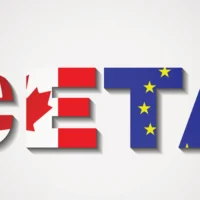What is India-EU Trade?
India-European Union’s (EU) trading relationship is the foundation of global trade, highlighting two economic superpowers’ interconnectedness. India’s influence is growing as a global hub for manufacturing, while the EU has a position of being the largest trading bloc. As a result, the trade relationship between the two countries continues to be of increasing importance. This article explores India-EU trade dynamics and its future outlook.
Historical Overview
The India-EU relationship dates back as far as the 1960s. India was the first country to establish diplomatic ties with the EEC (European Economic Community), which is the precursor of the EU. As the years passed, the partnership has become a robust one, incorporating trade agreements, dialogues with strategic partners, and joint ventures for technology, education, or climate change.
The Cooperation Agreement of 1994 marked an important landmark by providing a formalized framework for trading and economic collaboration. Many subsequent summits took place, as well as negotiations. In 2004, the EU and India Strategic Partnership was established.
Commerce Volume and Growth
India and the EU trade with each other frequently. As of 2023, bilateral trade was valued at approximately $ 120 billion, showing steady growth despite global economic uncertainties. India is India’s third-largest trading partner, and India is the EU’s 10th biggest.
Key Industry Sectors
- Exports of Goods to EU: India’s exports include textiles as well as machinery, pharmaceuticals, chemicals, and agricultural goods. Imports include transport equipment and high-technology products.
- Services: Trade Information Technology, Financial Services and Business Outsourcing dominate India’s EU services trade.
- Investment flow: India receives more than $100 billion in Foreign Direct Investment from the EU in various sectors, including telecommunications. Energy, infrastructure, and telecommunications.
Opportunities in India-EU Trade
India and the EU have been working on a Free Trade Agreement for the last decade. These negotiations could eliminate tariffs in the future, as well as increase the volume of trade and bring investors. Important points to be discussed include the rights of intellectual property, data protection and sustainable development.
Green Transition Co-operation
India’s desire for sustainable energy is aligned with the EU. There are many opportunities to expand bilateral trade through collaborations on clean energy models, renewable energies, and circular economic models.
Digital Economy and Technology
India’s digitally advancing infrastructure and EU technology advances create synergies in the areas of artificial intelligence (AI), digital governance, and cybersecurity. The collaboration can lead to a more robust digital trading ecosystem.
Diversification supply chain
India, despite global supply disruptions and China’s dominance in the market, is seen as a viable option by the EU. A stronger trade relationship can reduce the dependence of supply chains on a single market and increase their resilience.
Challenges in India-EU Trade
A high level of tariffs is a sticking point in FTA negotiations. Also, other non-tariff barriers like strict EU standards create difficulties for Indian importers.
Misalignment between Regulatory Policies and Regulatory Standards
There are challenges posed by differences between regulatory frameworks, particularly those relating to intellectual rights and privacy. India’s Data Protection Laws and the EU General Data Protection Regulation (GDPR), which contrast with India’s developing data protection legislation, are complicating digital commerce.
Geopolitical Consciousness
India-EU Relations are affected by Brexit (Brexit), Indo-Pacific tensions as well the Russia-Ukraine dispute. The geopolitical instability necessitates an approach that is balanced in the bilateral relationship.
Economic disparities
India’s regional economic disparities are markedly different from the EU, which is made up of developed economies. Due to this imbalance, trade agreements often have different priorities.
Key Sectors Driving Future Growth
India’s ambition to reach 50% renewable energy by 2030 is aligned with the EU climate targets. Shortly, collaborations within the solar, hydrogen, and wind sectors will determine trade.
Pharmaceuticals and Healthcare
India is an important global pharma hub that can help meet the healthcare needs of Europe. The growing trade in general vaccines and medical devices is a significant opportunity for the EU.
Education and Skill Development
India’s growing focus on skills and education can help strengthen the ties between India and Europe in terms of student exchanges.
Tourism and Hospitality
After the Pandemic, travel will return to normal, and there are mutual advantages in this sector. India’s cultural riches and EU heritage sites can encourage bilateral tourism.
Strengthening institutional mechanisms
India and the EU will need to enhance their institutions for them to achieve maximum trade potential. Regular dialogue, transparent processes, and quick dispute resolution can foster trust and efficiency.
Sustainable trade
Integration of sustainability into trade deals is critical, especially in light of the urgency to combat climate change. Partnering with other countries to achieve green standards, neutrality of carbon emissions, or environmental conservation is a benchmark that can help create global agreements.
Boosting human-to-human ties
By expanding visa facilitation as well as cultural exchanges and creative industry collaborations, bilateral relations can be strengthened and mutual understandings of markets promoted.
Conclusion
India and the EU have a great deal of potential in their trade relationship, fueled by mutual benefits, complementary strengths, a shared vision for sustainable economic development, as well as mutual interests. The challenges will persist, but a balanced strategy addressing regulatory differences, tariff issues, and geopolitical risks can create a successful partnership. India-EU is set to become a key player in international trade, as global economic dynamics are changing.



